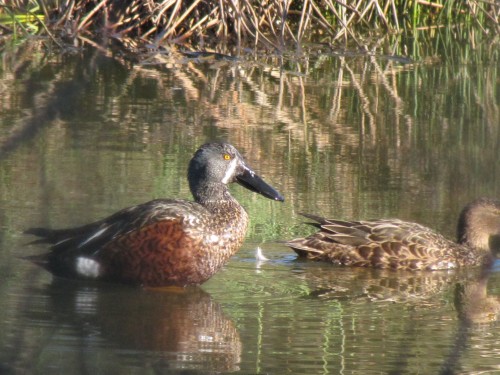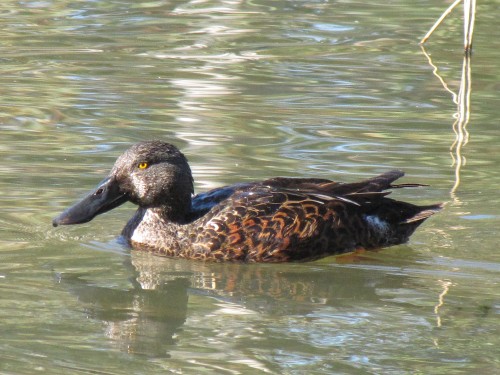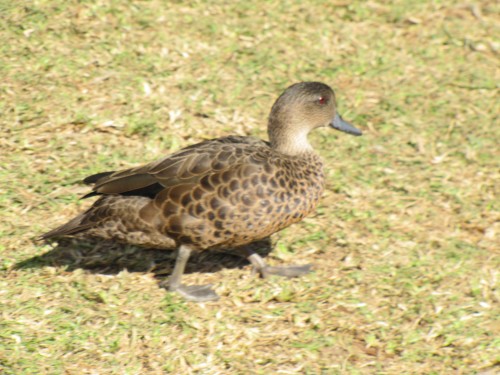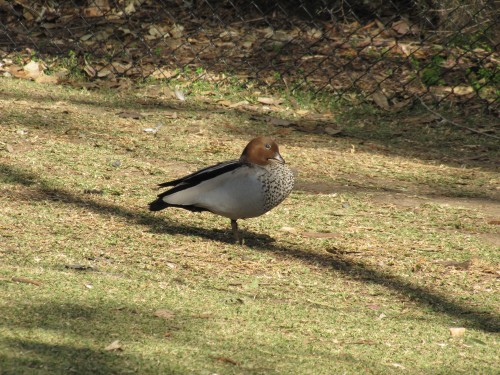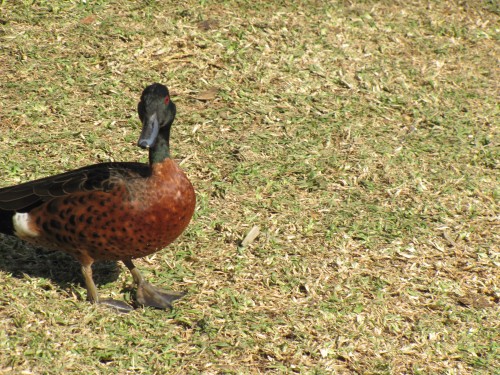Ducks at the Australian Reptile Park
On our recent visit to the Australian Reptile Park near Gosford north of Sydney, I was constantly on the lookout for birds that I could photograph. When most people were having lunch in the park picnic area – which was very nice, by the way – I noticed that there were quite a few ducks also present.
This is a familiar sight in Australia; where people gather to eat, many bird species, including ducks, tend to gather. Unfortunately many people also feed the birds, ignorant of the fact that human food is not only unsuitable for our native species, too much can also be deadly to the birds’ health.
Of the prominent ducks present, I photographed three species in the picnic area: Grey Teal, Chestnut Teal and Australian Wood Duck. Also present nearby were a few Pacific Black Ducks, but I decided not to photograph those as I have plenty of shots of that species already.
Mallards in Meknes, Morocco
During our tour of Meknes in Morocco we visited a beautiful golf course inside a fortress in the heart of the city. There was a large pond as a part of the landscaping of the golf course. I saw a few ducks on this pond, including several Mallards.
This was one species I didn’t see all that often in Morocco, but that probably just reflects the fact that our tour didn’t take us to many places where there was suitable habitat. Ours was more of a cultural tour; any birding was merely incidental. One day I hope to return and do more of an environmental tour, taking in natural habitats where the bird life is more prevalent.
There was another species of duck present, but I couldn’t identify it.
Grey Heron, Meknes, Morocco
In Meknes we walked past this rectangular reservoir in the heart of the city. When I saw the water I was eager with anticipation at seeing some of the water birds of Morocco. I was disappointed.
On a structure way out in the middle was a solitary Grey heron accompanied by one unidentified duck. Grey Herons are widespread in Africa, Europe and Asia but don’t occur here in Australia, so this one bird was a new species for me. I never saw another one on our trip. Birding can be like that; exciting one day, disappointing the next.
The photos are disappointing too, but it was not surprising because the birds were over one hundred metres away so I was really stretching the capabilities of the zoom lens.
Call for ban on duck shooting
I try not to be too controversial or political on this site. My main purpose in writing this blog is to showcase the beauty and wonder of Australian birds, often through my photographs. This site is also filling an educational role in helping people to understand more about this country’s avifauna.
On special occasions I do make some controversial statements, like when I speak out about the damage domestic cats do to the Australian wildlife, including birds, mammals and reptiles.
Duck shooting
Another topic that can get me annoyed and angry is the matter of duck shooting. Here in Australia each state has its own regulations and laws concerning recreational shooting. I believe it is much tighter here than in other countries, including the United States where many of my readers reside. Shooters are far more actively into lobbying for their “rights” in other countries, but it concerns me that strong lobby groups are gaining momentum here in Australia. And they seem to have a growing political clout with the decision makers.
Conservation and birding groups have been trying to get recreational shooting – especially duck shooting – banned for some years. A newly elected government in the state of Victoria has been pressured into extending the hunting season, and increased the number of ducks that can be shot. I find it abhorrent that people take pleasure in killing wildlife in the name of “sport” or “fun”. We have severe penalties for harming almost all of our native species of birds and animals; why should ducks be any different?
You can read a passionate and informed article on the Birds Australia website here. It includes the email address of the premier of Victoria if you wish to complain.
Further reading:
- The problem with cats
- Birds and cats do not mix
- Why do baby birds disappear?
- Foul political decision is a lame duck – article on the Birds Australia site
